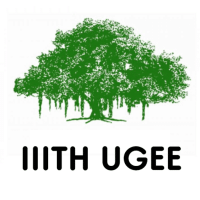JEE Exam > JEE Questions > The line passing through the extremely A of t...
Start Learning for Free
The line passing through the extremely A of the major axis and extremity B of the minor axis of the ellipse x2 + 9y2 = 9 meets its auxiliary circle at the point M . Then the area of the triangle with vertices at A,M and the origin O is
- a)31/10
- b)29/10
- c)21/10
- d)27/10
Correct answer is option 'D'. Can you explain this answer?
Verified Answer
The line passing through the extremely A of the major axis and extremi...
Equation of line AM is x + 3y - 3 =0

Most Upvoted Answer
The line passing through the extremely A of the major axis and extremi...
Explanation:
The given ellipse equation is x^2 + 9y^2 = 9, which can be written as x^2/9 + y^2/1 = 1. This ellipse has a major axis of length 6 (2a = 6) and a minor axis of length 2 (2b = 2).
Finding the Endpoints of Major and Minor Axes:
- The endpoints of the major axis are (3, 0) and (-3, 0) denoted by points A and A'.
- The endpoints of the minor axis are (0, 1) and (0, -1) denoted by points B and B'.
Finding the Point of Intersection with Auxiliary Circle:
- The auxiliary circle of the ellipse has the equation x^2 + y^2 = 1.
- Substituting the equation of the ellipse into the auxiliary circle equation, we get x^2 + 9y^2 = 9 = x^2 + y^2.
- Solving the above equation gives y^2 = 1/10, which implies y = ±1/√10.
- Therefore, the points of intersection are (3, 1/√10) and (3, -1/√10) denoted by M and M'.
Calculating the Area of the Triangle:
- The area of the triangle with vertices A, M, and the origin O can be calculated using the formula for the area of a triangle given by half the magnitude of the cross product of vectors AM and AO.
- The vector AM is (3, 1/√10) and the vector AO is (-3, 0).
- Calculating the cross product magnitude gives |AM x AO| = |3(0) - (1/√10)(-3)| = 3/√10.
- Therefore, the area of the triangle is 1/2 * base * height = 1/2 * 3 * 3/√10 = 9/2√10 = 9√10/20 = 9/10.
- So, the correct answer is option 'D' (27/10).
Community Answer
The line passing through the extremely A of the major axis and extremi...


|
Explore Courses for JEE exam
|

|
Similar JEE Doubts
Question Description
The line passing through the extremely A of the major axis and extremity B of the minor axis of the ellipse x2 + 9y2= 9 meets its auxiliary circle at the point M . Then the area of the triangle with vertices at A,M and the origin O isa)31/10b)29/10c)21/10d)27/10Correct answer is option 'D'. Can you explain this answer? for JEE 2025 is part of JEE preparation. The Question and answers have been prepared according to the JEE exam syllabus. Information about The line passing through the extremely A of the major axis and extremity B of the minor axis of the ellipse x2 + 9y2= 9 meets its auxiliary circle at the point M . Then the area of the triangle with vertices at A,M and the origin O isa)31/10b)29/10c)21/10d)27/10Correct answer is option 'D'. Can you explain this answer? covers all topics & solutions for JEE 2025 Exam. Find important definitions, questions, meanings, examples, exercises and tests below for The line passing through the extremely A of the major axis and extremity B of the minor axis of the ellipse x2 + 9y2= 9 meets its auxiliary circle at the point M . Then the area of the triangle with vertices at A,M and the origin O isa)31/10b)29/10c)21/10d)27/10Correct answer is option 'D'. Can you explain this answer?.
The line passing through the extremely A of the major axis and extremity B of the minor axis of the ellipse x2 + 9y2= 9 meets its auxiliary circle at the point M . Then the area of the triangle with vertices at A,M and the origin O isa)31/10b)29/10c)21/10d)27/10Correct answer is option 'D'. Can you explain this answer? for JEE 2025 is part of JEE preparation. The Question and answers have been prepared according to the JEE exam syllabus. Information about The line passing through the extremely A of the major axis and extremity B of the minor axis of the ellipse x2 + 9y2= 9 meets its auxiliary circle at the point M . Then the area of the triangle with vertices at A,M and the origin O isa)31/10b)29/10c)21/10d)27/10Correct answer is option 'D'. Can you explain this answer? covers all topics & solutions for JEE 2025 Exam. Find important definitions, questions, meanings, examples, exercises and tests below for The line passing through the extremely A of the major axis and extremity B of the minor axis of the ellipse x2 + 9y2= 9 meets its auxiliary circle at the point M . Then the area of the triangle with vertices at A,M and the origin O isa)31/10b)29/10c)21/10d)27/10Correct answer is option 'D'. Can you explain this answer?.
Solutions for The line passing through the extremely A of the major axis and extremity B of the minor axis of the ellipse x2 + 9y2= 9 meets its auxiliary circle at the point M . Then the area of the triangle with vertices at A,M and the origin O isa)31/10b)29/10c)21/10d)27/10Correct answer is option 'D'. Can you explain this answer? in English & in Hindi are available as part of our courses for JEE.
Download more important topics, notes, lectures and mock test series for JEE Exam by signing up for free.
Here you can find the meaning of The line passing through the extremely A of the major axis and extremity B of the minor axis of the ellipse x2 + 9y2= 9 meets its auxiliary circle at the point M . Then the area of the triangle with vertices at A,M and the origin O isa)31/10b)29/10c)21/10d)27/10Correct answer is option 'D'. Can you explain this answer? defined & explained in the simplest way possible. Besides giving the explanation of
The line passing through the extremely A of the major axis and extremity B of the minor axis of the ellipse x2 + 9y2= 9 meets its auxiliary circle at the point M . Then the area of the triangle with vertices at A,M and the origin O isa)31/10b)29/10c)21/10d)27/10Correct answer is option 'D'. Can you explain this answer?, a detailed solution for The line passing through the extremely A of the major axis and extremity B of the minor axis of the ellipse x2 + 9y2= 9 meets its auxiliary circle at the point M . Then the area of the triangle with vertices at A,M and the origin O isa)31/10b)29/10c)21/10d)27/10Correct answer is option 'D'. Can you explain this answer? has been provided alongside types of The line passing through the extremely A of the major axis and extremity B of the minor axis of the ellipse x2 + 9y2= 9 meets its auxiliary circle at the point M . Then the area of the triangle with vertices at A,M and the origin O isa)31/10b)29/10c)21/10d)27/10Correct answer is option 'D'. Can you explain this answer? theory, EduRev gives you an
ample number of questions to practice The line passing through the extremely A of the major axis and extremity B of the minor axis of the ellipse x2 + 9y2= 9 meets its auxiliary circle at the point M . Then the area of the triangle with vertices at A,M and the origin O isa)31/10b)29/10c)21/10d)27/10Correct answer is option 'D'. Can you explain this answer? tests, examples and also practice JEE tests.

|
Explore Courses for JEE exam
|

|
Signup to solve all Doubts
Signup to see your scores go up within 7 days! Learn & Practice with 1000+ FREE Notes, Videos & Tests.























